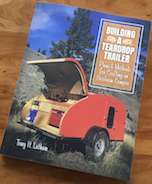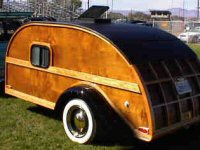well, the search function told me about glues that can bond aluminum to wood, or foam to cloth, but nobody has talked about gluing foam insulation onto the back side of an aluminum skin.
i have .040 skin riveted to an aluminum frame, and it oilcans ALOT.
i'm considering troweling on silicone caulk to make a foam/aluminum composite even though it's expensive, and the caulk wasn't really designed for that.
so i'll ask the best and brightest here: what adhesive works well to bond aluminum to foam?
what adhesive for aluminum to foam?
6 posts
• Page 1 of 1
what adhesive for aluminum to foam?
We may have philosophy and opposable thumbs, but most humans show all the wisdom of starved raccoons. It's amazing that more of us aren't found flattened on the side of our own roads.
the original bub build thread http://www.tnttt.com/viewtopic.php?f=5&t=19227
the original bub build thread http://www.tnttt.com/viewtopic.php?f=5&t=19227
-

coal_burner - Teardrop Master
- Posts: 126
- Images: 184
- Joined: Mon Oct 01, 2007 11:08 am
- Location: Berkley, Michigan
Re: what adhesive for aluminum to foam?
and it oilcans ALOT.
I have to believe that even if you find the right adhesive, the foam surface will fail as the aluminum expands. But I don't know for sure.
Good luck with your quest.

Tony
-

tony.latham - Gold Donating Member
- Posts: 7073
- Images: 17
- Joined: Mon Jul 08, 2013 4:03 pm
- Location: Middle of Idaho on the edge of nowhere

